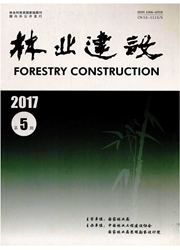

 中文摘要:
中文摘要:
为探究晋西北黄土区人工林土壤水分消耗与恢复特征,以岚县油松、杨树、杏树林地为研究对象,荒草地作为对照样地,通过定点观测与对比分析,对不同人工林植物水分亏缺度与植物水分补偿度进行了研究。结果表明:在干旱半干旱地区,3种人工林和荒草地0-300cm土层深度内均有不同程度的干层分布,杏树0-300cm土层均为严重干层,干层厚度最大。人工林植物水分亏缺度与补偿度均因树种不同而有一定差异,荒草地0-100cm土层植物水分亏缺最严重,平均亏缺度高达41.65%,油松次之,为36.40%。区域降水补偿深度不超过140cm,杏树0-300cm平均补偿度最高。3种人工林在120—200cm土层范围内均开始出现负补偿,200cm土层之后补偿度呈波动上升趋势。
 英文摘要:
英文摘要:
In order to find out the soil water consumption and recovery characteristics of artificial forest in northwestern Shanxi Province, the article taked Pinus tabulaeformis ,Poplar, Apricot as the research object and wasteland as a control in Lanxian. Plant water deficit degree and the spatio-temporal distributions of compensation degree of plant water storage deficit were studied by position-monitoring and comparatively analyzing, which were in the artificial forest in northwestern Shanxi Province. The results showed that 3 kinds of artificial forest and grassland all existed dry layer in the depth of 0-300cm. The dry layer of Apricot distributed most widely, and 0-300cm were realized for the severe dry layer. Plant water deficit degree and compensation degree had certain difference due to tree species. Wasteland plant water deficit was the most serious in 0-100 cm soil layers, and the average deficit was as high as 41.65%.In addition, the average deficit of Pinus tabulaeformis was 36.40%. Regional precipitation compensation depth was not more than 140cm, and Apricot average compensation degree was highest in 0-300cm. What was more, 3 kinds of artificial forest in the 120-200cm soil layer were beginning to appear the negative compensation. Meanwhile, below 200cm soil layer, the compensation degree showed upward trend in fluctuation.
 同期刊论文项目
同期刊论文项目
 同项目期刊论文
同项目期刊论文
 期刊信息
期刊信息
